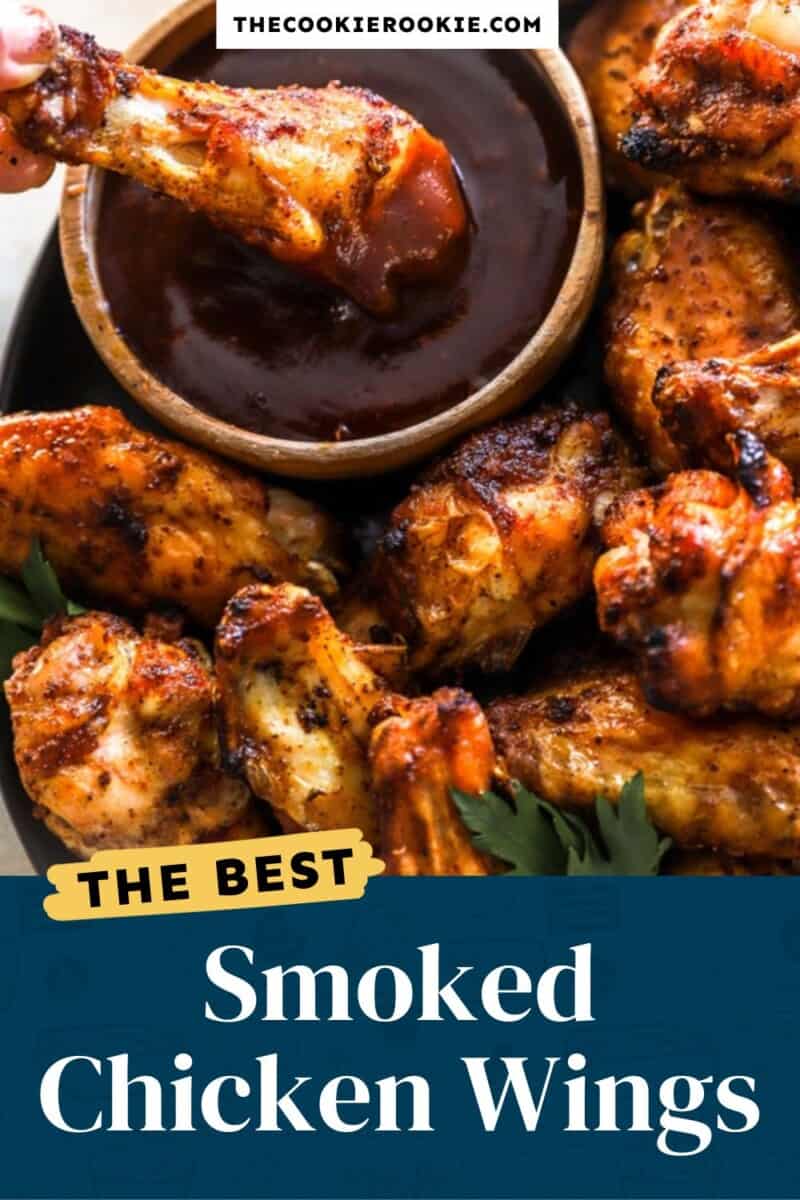A Southern-inspired appetizer that always impresses the crowd, Smoked Chicken Wings is always a big winner when it comes to taste, flavor, and popularity. These BBQ smoked wings, cooked slowly in a smoker box on the grill before hitting the grill directly, develop a deep smoky flavor and crispy char that perfectly complements the juicy and tender meat.
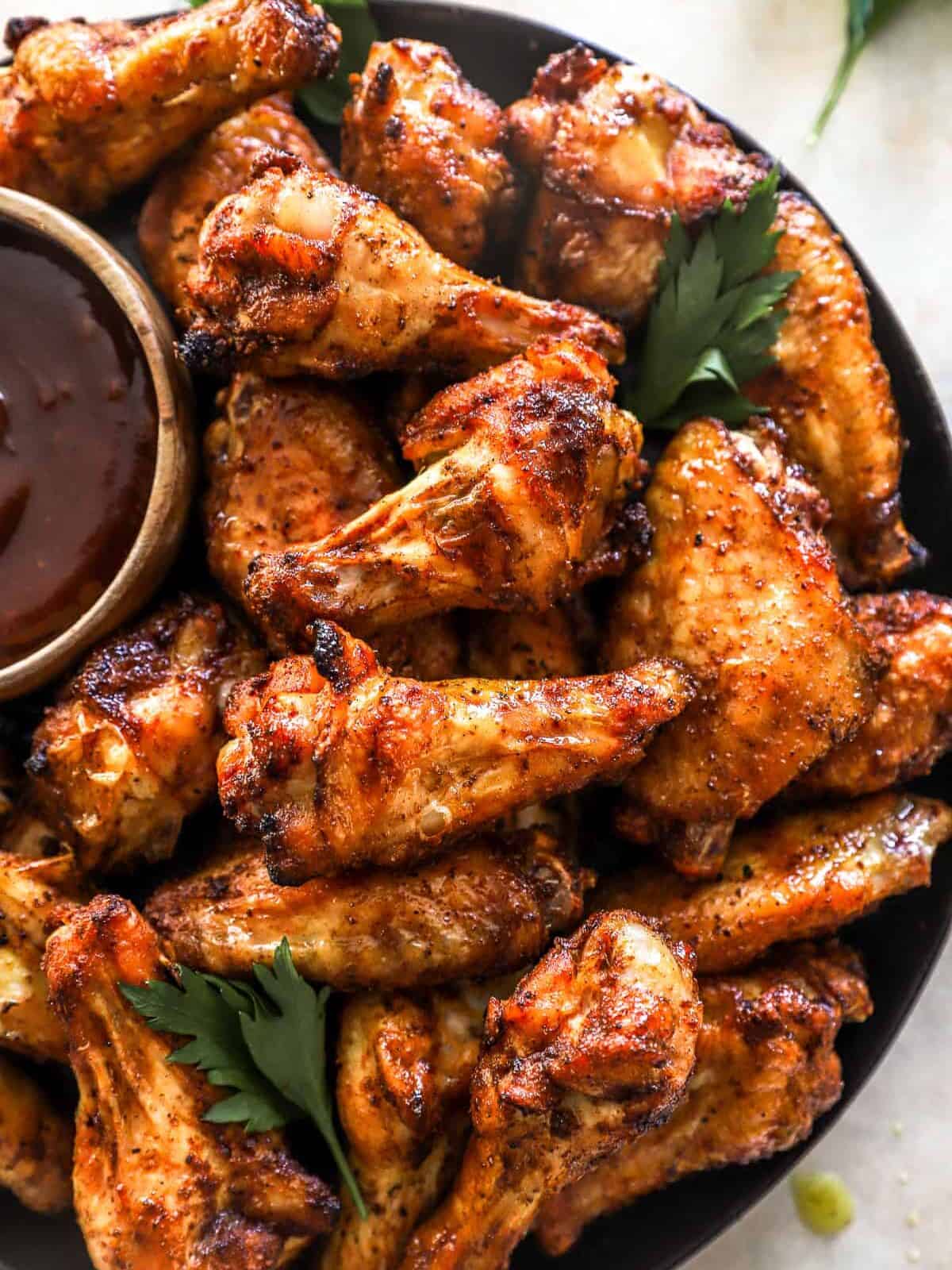
This post may include affiliate links that earn us a small commission from your purchases at no extra cost to you.
What’s in Smoked Wings?
While it may take a bit of extra time to smoke chicken wings, the tasty results are always worth it. Plus, you’ll get the satisfaction of feeling like a true pit master as you serve up these mouthwatering wings to your happy family and friends.
- Chicken Wings: One of the great things about chicken wings is their relatively low cost, which makes them an affordable choice for feeding a crowd or stretching your food budget.
- Oil: For this chicken wing recipe, heart-healthy and flavorful olive oil is the best choice.
- Spices: Chili powder, garlic, onion, and paprika, along with salt, are all the basic spices you need for the perfect flavor on your smoked chicken, but feel free to get creative and use your favorite pantry spices.
- Barbecue Sauce: Everyone has their favorite BBQ sauce, but feel free to try my “Homemade” BBQ Sauce Recipe (Best Brisket Sauce) for brushing over the wings while grilling.
If you have not yet invested in a smoker box to place on your grill, I highly recommend it. They are easy to find on Amazon and are a fraction of the cost of a real Southern barrel smoker.
Variations on Crispy Smoked Chicken Wings
There are so many ways to customize these smoked chicken wings! An easy way to change up the flavor is to swap the spices for a seasoning blend, like taco seasoning, chicken seasoning, Italian seasoning, Creole seasoning, or blackened seasoning.
You could also change up the type of sauce you toss them in. Try Buffalo sauce, sweet and sour sauce, balsamic glaze, or even apple cider sauce.
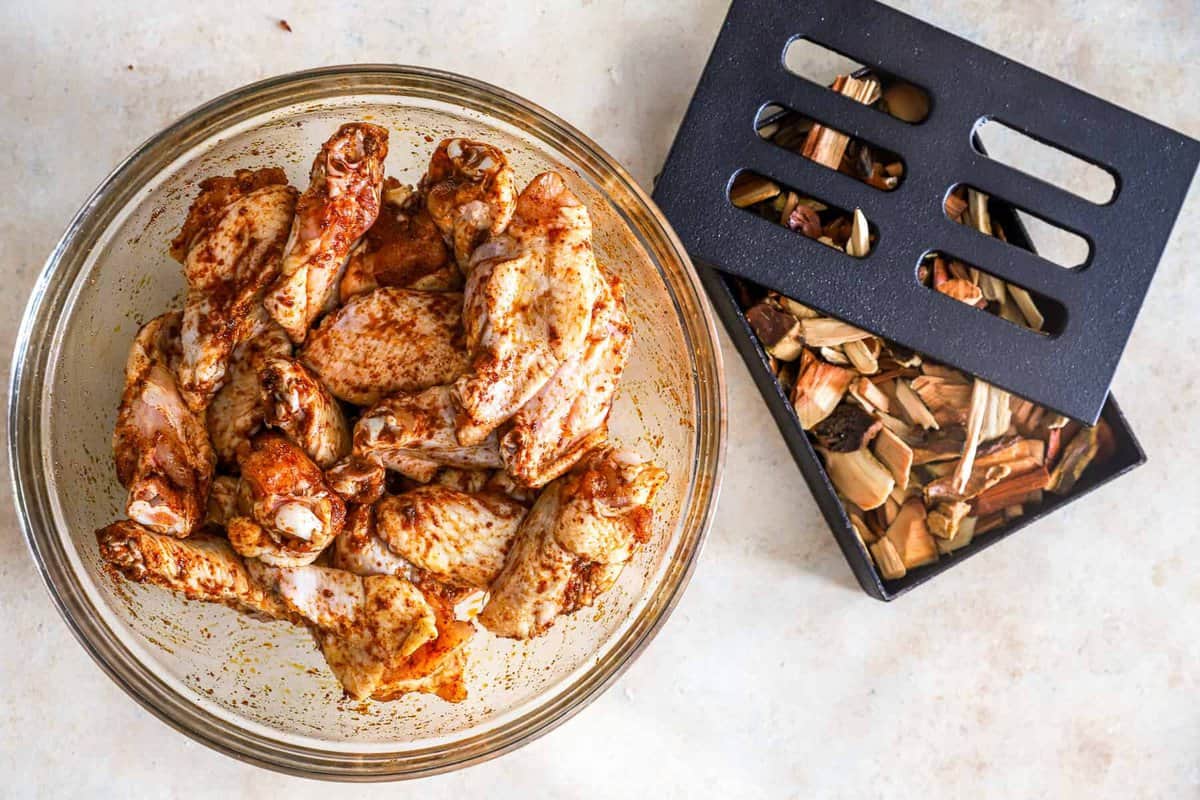
I typically recommend using apple, cherry, pecan, or maple wood for their subtle and sweet flavors. Hickory also works, but it will impart a much more intense smoky flavor. If you choose to use hickory, you may want to cut down on the smoking time!
Nope! I used a gas grill, but you can smoke wings in a charcoal grill, electric smoker, or pellet smoker. You’ll just need to follow the manufacturer’s instructions for an electric or pellet smoker.
Smoked wings are healthier than fried wings because they are not cooked in high amounts of oil. They are lower in overall fat and calories!
Nope! If the chicken wings are not properly thawed, the smoke will not be able to penetrate them, so they will not absorb all of that wonderful smoky flavor. I always recommend thawing the wings overnight in the refrigerator before cooking them!
Once you’ve smoked the wings, it’s important to increase the heat in order to crisp up the skin. That’s why we turn the grill up to 400°F in step 7!
You should smoke your wings until they reach an internal temperature of 165°F, which should take about 90 minutes.
Chicken wings can become rubbery if the heat is too low or if they are overcooked. Make sure your grill temperature is at least 225°F, but preferably 250°F, throughout the smoking time. Start checking the internal temperature of the wings at around 1 hour, and only continue cooking them if they have not yet reached 165°F.
I personally love barbecue sauce, but you could also keep them plain and dip them in ranch or Buffalo sauce!
How to Store and Reheat the Best Smoked Chicken Wings
Store leftover smoked chicken wings in an airtight container in the refrigerator for up to 3 days. Reheat in a 350°F oven on a wire rack set in a baking sheet for 15 minutes, or until heated through.
How to Freeze Crispy Smoked Wings
Freeze smoked chicken wings in an airtight container for up to 3 months. Let thaw overnight in the refrigerator before reheating.
What to Serve with BBQ Smoked Wings
No plate of wings, whether smoked or fried, is complete without fun dipping sauces. Serve with more of my homemade BBQ sauce, Homemade Honey Mustard Dipping Sauce or Dressing, or Homemade Ranch Dressing Recipe.
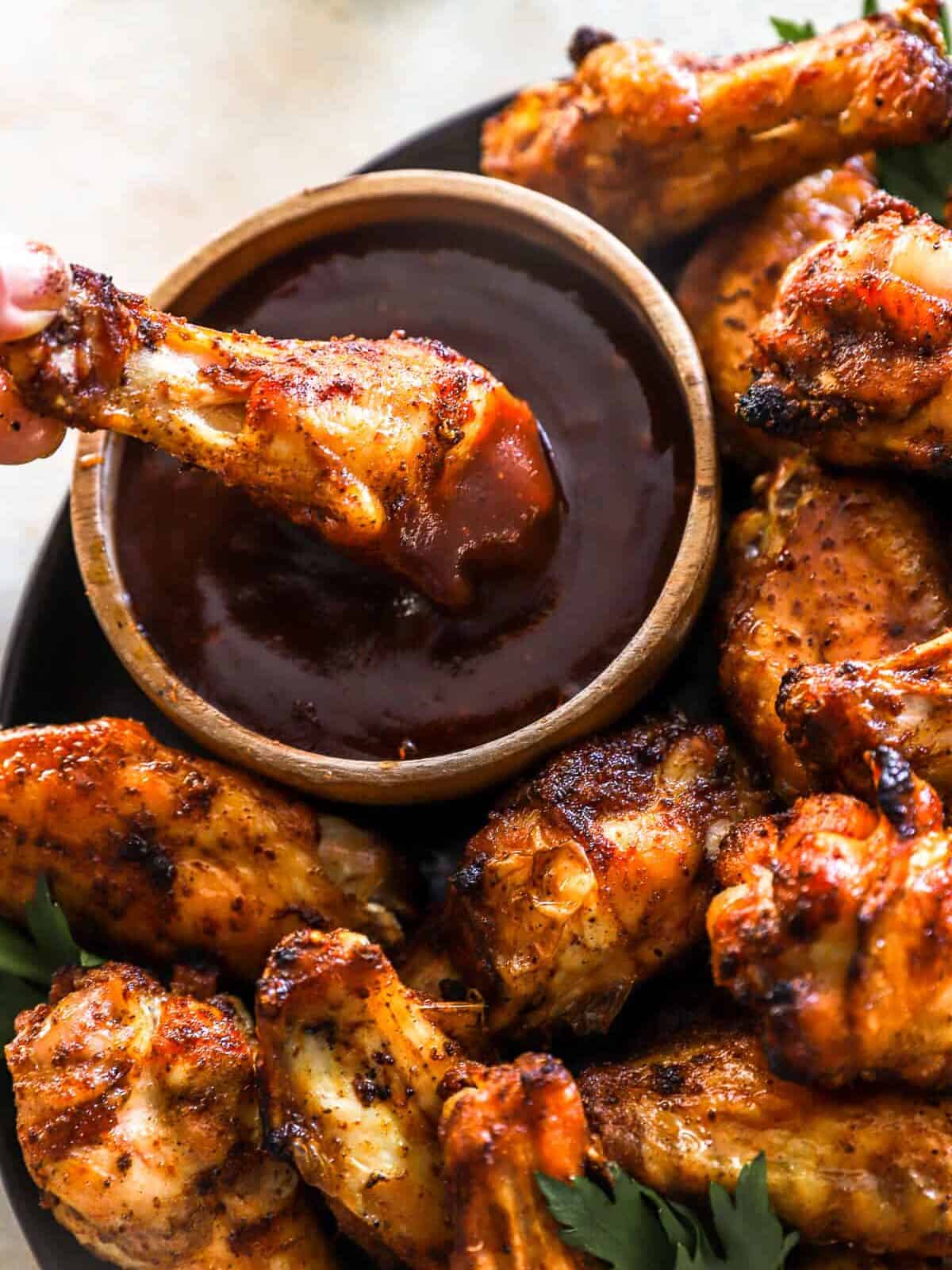
Smoked Chicken Wings Recipe
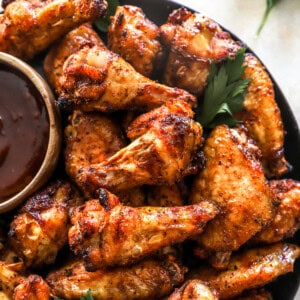
Equipment
- Grill
Ingredients
- 4 pounds bone-in, skin-on chicken wings thawed if frozen (about 16-20 wings)
- 2 tablespoons olive oil
- 2 teaspoons kosher salt
- 2 teaspoons chili powder
- 1 teaspoon onion powder
- 1 teaspoon garlic powder
- 1 teaspoon smoked paprika
- 1 cup barbecue sauce optional, for serving
Instructions
- Soak the wood chips in water for at least 30 minutes prior to cooking.
- Fill the smoker box with wood chips. Place the smoker box on the grill. Preheat the grill to medium heat.
- Pat the wings dry with paper towels.4 pounds bone-in, skin-on chicken wings
- Combine the oil, salt, chili powder, onion powder, garlic powder, and smoked paprika in a small dish. Rub the oil and spices over the chicken pieces coating them completely.2 tablespoons olive oil, 2 teaspoons kosher salt, 2 teaspoons chili powder, 1 teaspoon onion powder, 1 teaspoon garlic powder, 1 teaspoon smoked paprika
- Turn the grill heat down to low between 225-250°F.
- Grill the wings over indirect heat (by turning off half of the burners on the grill and placing the wings over the unlit burners) for about 90 minutes with the cover closed, flipping them once halfway through.
- Increase the grill temp to medium-high heat about 400°F.
- Brush the barbecue sauce over the wings if desired.1 cup barbecue sauce
- Transfer the wings over to the lit burner and grill for another 10 minutes.
Becky’s Tips
- Look for wings labeled “party wings” or “split wings”, as the drumette and wings will already be detached.
- You can also crisp up the skin under a broiler in the oven instead of on the grill.
- Keep the wings warm by laying pieces on a wire rack set in a rimmed baking sheet with space between them and placing them in a 200°F oven until ready to serve.
- Nutritional information does not include optional ingredients.
Nutrition information is automatically calculated, so should only be used as an approximation.

